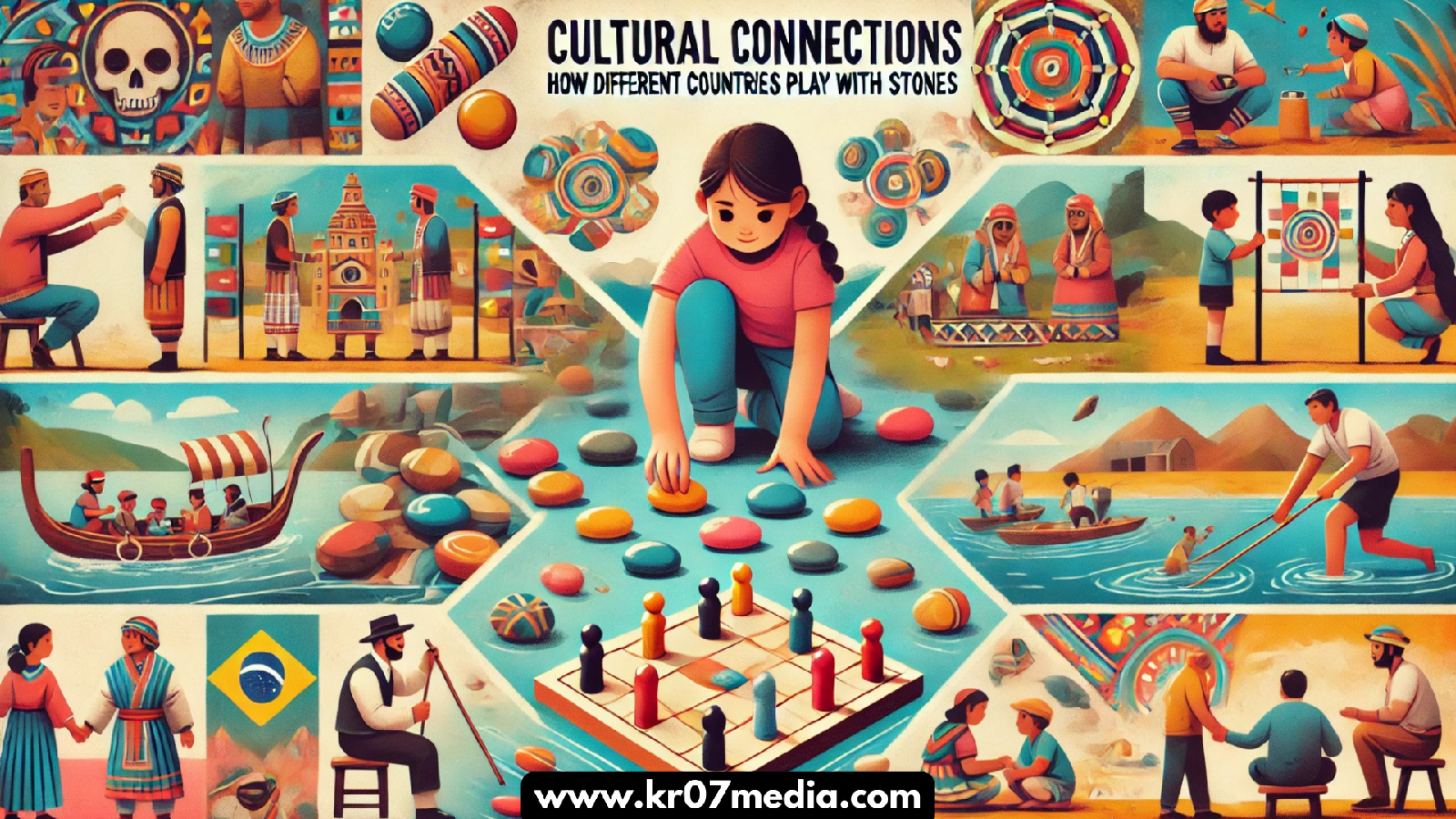Cultural Connections: How Different Countries Play with Stones
Across the world, stones have been more than just inanimate objects—they have been tools, toys, and cultural symbols for centuries. Different countries and cultures have developed unique games, traditions, and spiritual practices around stones, reflecting their deep connection to nature, play, and history. This article explores how various cultures use stones for recreation and cultural expression.
1. India: Lagori – The Seven Stones Game
In India, children play Lagori (also known as Seven Stones), a traditional game that dates back centuries. The game involves stacking seven flat stones and trying to knock them down with a ball. The team that knocks the stones must rebuild them while the opposing team tries to tag them out. This game, played in villages and cities alike, fosters teamwork, agility, and strategy.
2. Japan: Suikawari and Go
Japan has a long history of using stones in both entertainment and intellectual pursuits. Go, an ancient board game played with black and white stones, is one of the most strategic games in the world, requiring deep thinking and patience. On the lighter side, Suikawari is a summer beach game where blindfolded players use a stick to break a watermelon, much like a piñata but with the added challenge of listening to teammates’ directions.
3. Scotland: Curling – The Ice Sport with Stones
One of Scotland’s most famous contributions to the world of stone games is curling. Originating in the 16th century, this winter sport involves sliding heavy, polished granite stones across ice toward a target. Players sweep the ice to control the stone’s speed and direction, making it a game of precision and teamwork. Curling has since gained international recognition, becoming a beloved Olympic sport.
4. Africa: Mancala – The Game of Stones and Strategy
Many African countries play variations of Mancala, a traditional board game that involves moving small stones or seeds across a series of pits on a wooden board. The objective is to capture as many stones as possible. Played across generations, Mancala teaches strategic thinking and is often passed down as a cultural tradition.
5. Greece: Knucklebones – The Ancient Stone Tossing Game
The ancient Greeks played Knucklebones, a game similar to modern jacks. Small bones or stones were tossed into the air, and players had to catch them in various ways. This game, which dates back to at least 500 BCE, was both a pastime and a tool for fortune-telling. Variations of this game have been played worldwide, from Rome to modern-day playgrounds.
6. Native American Traditions: Stone Tossing and Spiritual Games
Many Native American tribes have used stones in traditional games and ceremonies. One well-known game involves tossing small stones or bones onto a marked surface to predict future events or make decisions. Some tribes also used stone hoops and arrows in target-based games, teaching hunting skills to young warriors.
7. China: Hopscotch and Stone Balance Challenges
In China, children have long played stone-based games, including a form of hopscotch where numbered squares are drawn on the ground, and a small stone is tossed as part of the game. Additionally, some regions have balancing challenges, where players try to stack or balance stones in intricate ways, testing patience and hand-eye coordination.
8. Peru: Stone-Throwing Contests in the Andes
In the Andean regions of Peru, stone-throwing contests are a traditional test of strength and accuracy. These contests, often part of local festivals, involve hurling stones at distant targets to showcase precision and skill. Such games reflect the deep connection between indigenous communities and their rugged landscapes.
Conclusion: A Universal Bond Through Stones
Despite differences in geography and culture, the act of playing with stones unites people across the world. Whether as part of a strategic game, a test of strength, or a childhood pastime, stones have remained a simple yet profound medium of play. These games remind us that, no matter where we come from, we share a common human instinct to interact with the natural world in creative and meaningful ways.



